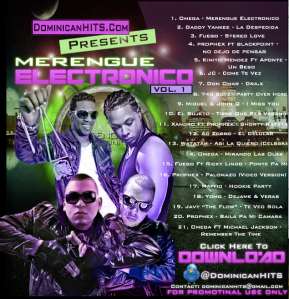2005 seems so far away….
So I know it seems “trend-ish” to talk about musical cultures like they’re commodities, as if a genre with a geography and a history were equivalent to a fashion accessory (“kuduro is this year’s keffiyeh!”). But of course they are fashion accessories as well, right? Perhaps not to the well-meaning bloggeratti, who are exploring means of ethical consumption and creative interaction between the artists of the global south and enthusiasts of the imperial core. But in the brief period of time that we’ve seen international booty bass styles burst through our high-speed internet connections, a clear life-cycle has emerged that mirrors the economic structure that has laid the foundation for these styles and their consumption: boom and bust. In this post, I’d like to sketch this progression and interrogate the relationship of nu-whirled DJ-bloggers (of which I am a part) to it. And to provide myself a convenient escape hatch, I’ll classify this as an “intervention” to excuse any empirical oversights. I’d like this to provoke a conversation that has been largely ignored and tip-toed around by the most intelligent commentators of this branch of music, and will accept criticism and debate with an open mind.
The dominant narrative is well established: in the midst of urban poverty afflicting a community of color/nonWestern nationality, young people appropriate the techniques of hip hop/reggae/techno and make their own version of these established genres in their vernacular. A flurry of creativity creates an entire musical culture full of rapid stylistic changes and hybridity; meanwhile, the older generation and middle classes disdain the music as oversexual and immoral. Then the music hits the shores of the West, through immigrant diasporas, study-abroad programs, and canny journos looking for the next big thing. Gushing articles are written, cosmopolitan centers host parties centered around the sound, and the most recognizable sonic elements of these genres (dem bow, tamborazo) show up in remixes and DJ sets. A few artists are cherrypicked as leading the crop. A compilation album firms up the brand identity (what are genres but brands?). Tours and careers are launched. And then the genre fails to keep up with the rapid cultural turnover endemic to digital capitalism and interest fades. Luckily new genres from new locales spring up to fill the void.
Reggaeton in some ways was one of the first post-WWW examples of these genre cycles, and in many ways the most spectacular, but the model predates it (I would argue that Detroit ghettotech follows a similar trajectory but worked mostly through “old media” infrastructure). It is also unique in many ways (of course each genre has its own unique history) in that reggaeton became associated with the rising Hispanic population of the United States unlike the minimal mainstream penetration of funk carioca or grime, which had little in the way of newly acknowledged immigrant diasporas to piggyback upon.
The tale is familiar: an explosion of interest from international media conglomerates, who flooded their distribution channels with the new style. Major labels signed the biggest artists like Daddy Yankee and Tego Calderon. The Source and Bad Boy Records launched Latino brands, rock stations changed to all-reggaeton formats overnight. Movie deals, NPR documentaries, club nights, and popular literature all followed. This had parallel support from writers and academics, who hailed the emergence as an opportunity for Latinos in the U.S. to forge identities, just as marketers saw it as an opportunity to sell these identities to a newly important demographic. Reggaeton encountered resistance from the older generation, but also notably from hip hop fans, Latino and otherwise, who (unjustly or not) pointed out the repetitive nature of the beats and the lack of lyrical sophistication from MCs.
And then the crash. By 2006, all-reggaeton formats were diversifying by including bachata, salsa, and other types of Spanish pop into their mix. Calle 13’s (promoted by academics as the “conscious” alternative to the machismo of most reggaetoneros) biggest hit, “El Nadie Como Tu” isn’t reggaeton at all. In 2009, La Kalle was dropped from the Chicago market altogether; in its place was “Recuerdos,” an oldies format. The Source magazine declared bankruptcy and Source Latino has evaporated. While I could hear the occasional Dem Bow blasting from car stereos in my neighborhood during the summer of 2007, I have yet to hear it at all this year. Even established reggaeton artists have dropped under the radar. Most recently (the spark for this post) I bought a bootleg mix CD at a block party entitled “REGGAETON DEL 2009.” As new reggaeton had disappeared from my radar as it had largely disappeared from most of the blogs and magazines I turn to for such information, I wanted to see what was going on in the genre today. Fewer than half the tracks were reggaeton at all; instead were bachatas, some mambo tracks, pop-R&B from Don Omar and Ivy Queen, and, yes, a few songs with some of that ol’ Dem Bow, alongside newer trends like Autotune. Even reggaeton CDs lacked reggaeton.
So what happened? Obviously in the case of reggaeton, media conglomerates overexpanded, creating a bubble of interest. Just as speculation on real estate caused an artificial inflation of prices and a subsequent crash, so too went reggaeton. Similar bubbles affected other emergent genres of the same time: funk carioca (branded as baile funk) no longer appears in DJ sets or on the albums of fashionably globo-chic artists like Diplo and MIA; grime’s biggest artist Dizzee Rascal is leaving the sound behind to focus on mainstream pop. These genres are by no means dead — they still retain cachet in their places of origins, and maintain devotees in the places of export. I still enjoy all of them. But it seems plainly obvious that interest has moved elsewhere, and equally obvious that the same thing will happen again to Baltimore club, juke, kuduro, cumbia, bassline, kwaito, and whatever else comes along.
So why the silence from the perceptive writers of global ghettotech? There are precious few articles such as “The Demise of Hyphy” that describe the rise and fall of a music genre and how it came to pass. I have some theories on contributing factors. First of all, it’s a lot more fun (and easier) to jump on the bandwagon early and promote a new exciting musical genre than sift through the detritus of an older one. I should know — I’ve been that bandwagon jumper, and those articles were easier and more fun to write than this one. If you’re of progressive leanings, it’s distasteful to dismiss another culture, especially if you’ve tied it to identity politics — slam reggaeton and you risk slamming the people who still like it, those people who you were standing up for a couple years back. Finally there’s a self-interested motivation: if you are an early-adopter booster, you jeopardize your credibility as a tastemaker by calling attention to your own critical oversights and boosterism. But if we are going to be responsible commentators on global ghettotech, I think we have to shine a light on our own contexts (and not in the navel-gazing PoMo way) — how this stuff works in the cosmopolitan West, when it doesn’t work, and how interest (and profits) are generated and lost. Gregzinho’s post on Cabide DJ’s lackluster U.S. tour is getting there, but it still seemed like he was pulling punches; to bring a DJ unknown in the States several years after interest in funk peaked was going to be a tough sell. I went to the Zizek Tour when they stopped in Chicago, and even when they were plugged on all the appropriate sites, the venue was more than half empty. More recently I saw an interesting spectacle: ghetto house pioneer DJ Slugo opening for Egyptrixx, who makes a kind of international bass fusion music heavily in debt to juke. At a nearly empty club (on a Saturday night no less), the new (white middle-class) kid on the block, headlines, while the artist who helped shape the sound gets second billing (the first DJ, who played your standard global ghettotech genre-hop, left immediately after his set finished). Slugo had the biggest crowd response of the night; most people left when the headliner started up. When I left I wanted to throw in the towel for nu-whirled music, at least as it appears in indie clubs.
I don’t want to harp on the failure of music I enjoy, but I do want to understand what is going on. Bad venues? Bad promoters? Audiences committed to only the latest trendy beats? It’s obvious that a certain segment of educated middle class young urbanites have a symbiotic relationship with genres that have a very different resonance in their native contexts, but ironically I don’t see much analysis on it from the writers and DJs on their own context (again, SELF INCLUDED! SELF INCLUDED!). Like whiteness in general it’s become an invisible presence in these genres. Whether this relationship is mutualistic (both sides benefit), commensal (one side benefits, the other is unharmed), or parasitic (one side benefits at the expense of the other side) requires a lot more analysis, particularly of the economics that can get uncomfortable especially if you make income from this relationship. Focusing only on identity or semiotics, I feel, will not adequately address this. Without a political economy of global ghettotech we won’t understand the nature of this relationship, we won’t be able to make sure that interest in the privileged portions of the globe helps those places that make the music we love, and we won’t be able to make sure that these genres can be sustained. Wayne’s proposal looks promising, and I hope to see others follow the lead. As for myself, I feel only tangentially related to this stuff sometimes (I have but a likkle blog and no gigs, still haven’t learned how to laptop DJ), but I’ll be starting a PhD soon and looking for a diss topic… plus I love to throw darts…




 Posted by Gavin Mueller
Posted by Gavin Mueller 







